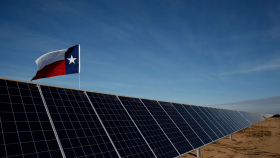Denmark recently announced that the country has already hit its 2020 solar energy capacity target of 200MW, reaching the milestone eight years ahead of schedule.
The country’s solar-friendly government resolved to increase the proportion of renewable energy by 35 percent among Danish energy suppliers earlier this year, setting themselves up to generate 100 percent renewable energy by 2050. The country will be adding 36 MW to their solar production capacity each month, totaling 1000 MW by 2020 and 3400 MW by 2030.
This impressive achievement is in large part due to the rapidly growing demand for clean energy and the government encouraging the development of renewable technologies despite the country not having an abundance of sunlight.
One such incentive is a net metering system implemented back in 2010, providing homeowners credits for excess power generated from domestic renewable energy systems.
“The demand for solar cells has increased dramatically since net metering was implemented in 2010. Net metering gives private households and public institutions the possibility of ‘storing’ surplus production in the public grid, which makes solar panels considerably more attractive,” said Kim Schultz, project manager from the Ministry of Foreign Affairs.
“Denmark benefits from a strong design tradition and this also characterizes the Danish solar sector in which aesthetics and thinking ahead of user needs is a central part of product development. This means that solar solutions are more likely to meet consumers’ demands,” he added.
Solar energy is not the only renewable energy source Denmark seems to be thriving on. Just last year, the country generated 26 percent of its energy requirement from wind, setting an admirable pace of rapidly replacing fossil fuels with renewables, and totally eliminating fossil fuels by 2050.





